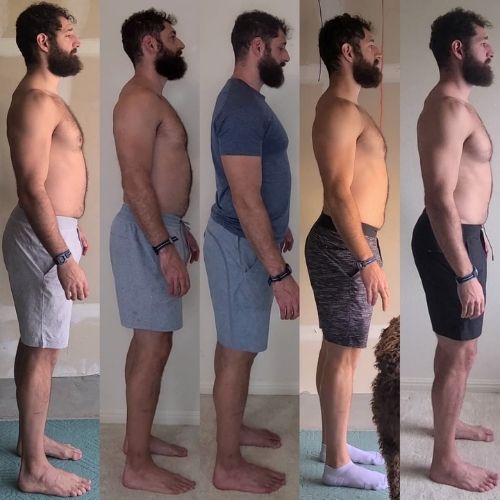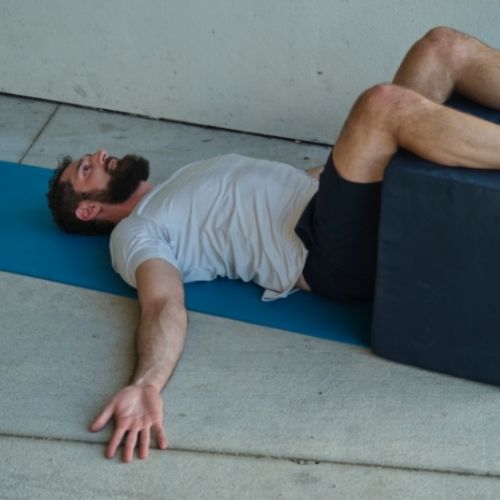Threw out your _____ ? This is what you should do! My to do list when I have flared up my spine.

I have had kind of a rough run with my body, posture, spine wellness etc. That struggle is also a reason that I am great at what I do, helping people feel understood and listened too.
What might that be you ask? Ill start with a bulleted list and then give you the short version.
- Cervical bone spurs
- Scoliosis thoracic
- Disc bulges lumbar, cervical
- Cervical disc protrusion
- Cervical disc herniation
So short version, horrible posture in life. Horrible everything posture, I had to metamorphosize into a totally different person to be the successful happy person I am today. Did like team sports much, didn’t like to exert myself too hard. Raised on video games and TV, a LOT of tv. So much TV and video games 1990-2001. Tried a few sports, intermittent activities, boy scouts etc. 2003 Middle school scoliosis test – looked a few times decided no. High school, I start to lift. 2008-2011 College, super into it, not doing it very well end up with shoulder, knee problems mid way in college. No concept of mobility, posture etc. 2012 I become a trainer, and Im pretty good but only understand part of the Pie. Lifts get heavier, I have no issues but look terrible by most standards. 2013 I ger adjusted the first time ever, and discover that my back is all kinds of wrecked, disorganized, throw my back out one or two times. 2016 I know a lot now, and Im a yoga teacher. I have become a posture therapist, and I discover my posture is HORRIBLE. Valgus knee, weighted right, pelvis high on the left and rotated forward. I start to throw my low back out every single time in certain stretches, I did have the core stability to support these new positions I was accessing, and certain stresses allowed the disc to bulge.

2017 I start a new job, a very intense one. I manage my posture a lot, and do almost no training. I become very weak, loose about 20 lbs. Occasional back throw out. 2018 Very big car wreck, discover scoliosis on the xray. 2019 I have been working at a chiropractor, and become a PE coach – throwing out my back less and less. I start throwing out my neck though, and feeling very tight. Order an MRI of my spine, and discover all the stuff listed above. My neck throws out real bad, and I get better at managing it each time, just like I did my low back. I become strict in my personal practice and live a normal life with a flare up on average every 6 months or so when I get lazy. I had a really bad one that lasted 9 days in 2019, with 7 of those pretty bed ridden. I recently, just a couple weeks ago had one, and it was the shortest most mild one ever and the first in 11 months.
Managing your posture really works.
It allows your body to stay aligned so the tissues can heal better, if your hoses and fluids are crimped and caught up, healing is much slower. If you are in a position that is causing damage to your body, you literally will never solve the problem without addressing that position and those tissues at the source of their issue. There is a culture around pain meds, injections, surgeries with people online cheering eachother to these ‘solutions’ and I believe that if you give your body a chance to help it self, it will be better than any of those other things.
So here is a checklist of things I will do if I have just slipped my back or neck.
I am doing something, recently it was bending over a little and patting my leg to excite my dog. I feel a slip. Something is up. If you are reading this, you probably know the feeling.

- I pause, think about what the rest of my day looks like, and what I NEED to get done. I know that my flare up will not be bad for at least another hour or two, so I will think about what I need to do before I am stuck resting.
- Accomplish those tasks, gather what you need to eat, do, etc, and some tools to help you.
- A piece of furniture to put your legs over
- A firm play to lay flat
- A wall to stand against
- A strap that doesnt stretch
- A large pillow
- Prism Glasses
- Recognize that I need to spend as much time as possible in a neutral resting position as soon as I can, so that my body can react to the injury in a neutral position. A lot of issues can occur when gravity is the only stress on an injury and the body will twist and stiffen itself in an attempt to protect it. Returning to neutral will prevent this stiffening in a poor position.
- Rest, and do some small supplemental movements to keep your pelvis balanced. If I am not very aggravated, I will gently explore the range of motion (in a supported position). Great resting positions include
- Lying
- Legs up Repose
- Standing against the wall
It can sometimes be helpful to support the neck or low back with a small roll.
5. Wait, your body needs some time to process your situation and respond. If I try to do too much, or go after it aggressively to release a muscle, or roll it out etc. I pretty much always end up in a worse spot, or suffer longer. You should focus on getting comfortable and staying that way, getting up as needed, and then returning to neutral.
6. If I have to work, or do chores while flared up, I will return to neutral often. When I arrive somewhere, every 10-20 minutes, and this is as simple as standing flat to a wall to give your body a good vertical load.
7. As the pain is subsided, usually the 2nd or 3rd day I will start to move around a lot more and introduce light stresses (simple exercises) with a little more intensity and patiently until I feel ready to return to normal programming.

This is a list I have developed surviving through at least a dozen low back and neck flare ups, with some weird middle spine and rib stuff too. I deal with a lot, and live uninhibited, and so should you!
With some effort, practice and patience you can leave your pain behind and train your body to be incredibly strong and capable. Posture will get you out of this hole, and then you continue to manage it and stress it more, and more, incrementally, letting it grow to the stress. This intelligent, purposeful stimulation to physical health is a tenet of the Brio Method.
Your body is like any other organism, with its own brain and directives. It is managing life for your conscious self, and like any other animal, a rodent for example, it will respond and adapt to stimulus it is exposed to. Having this view that I am caretaker of this organism that is my body helps me recognize that there are certain things it just needs like water, sunshine, a proper vertical load, etc. Being well is a mental game, but if you are not giving your body what it needs physically, nutritionally, and environmentally it is very hard to achieve.

